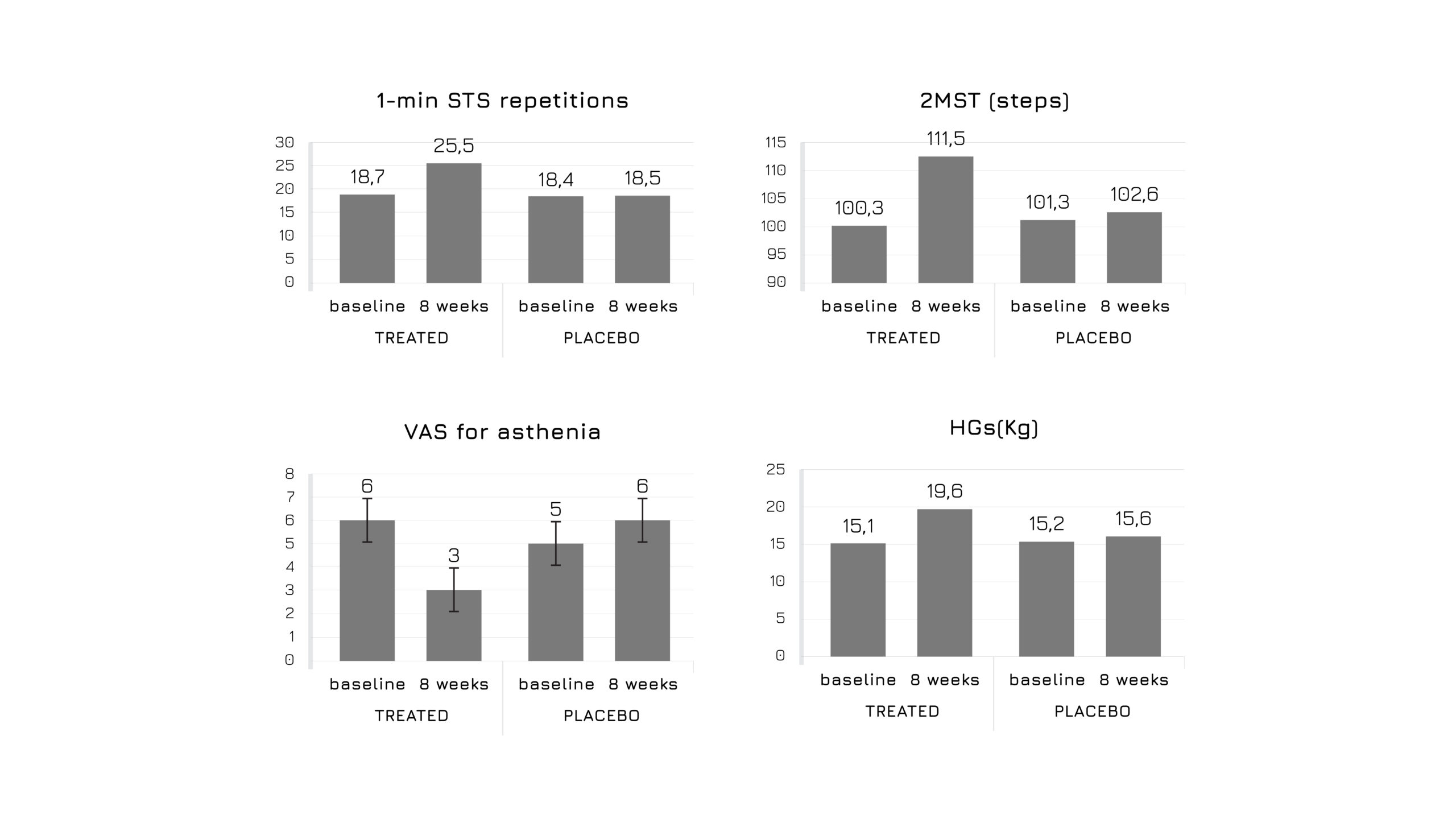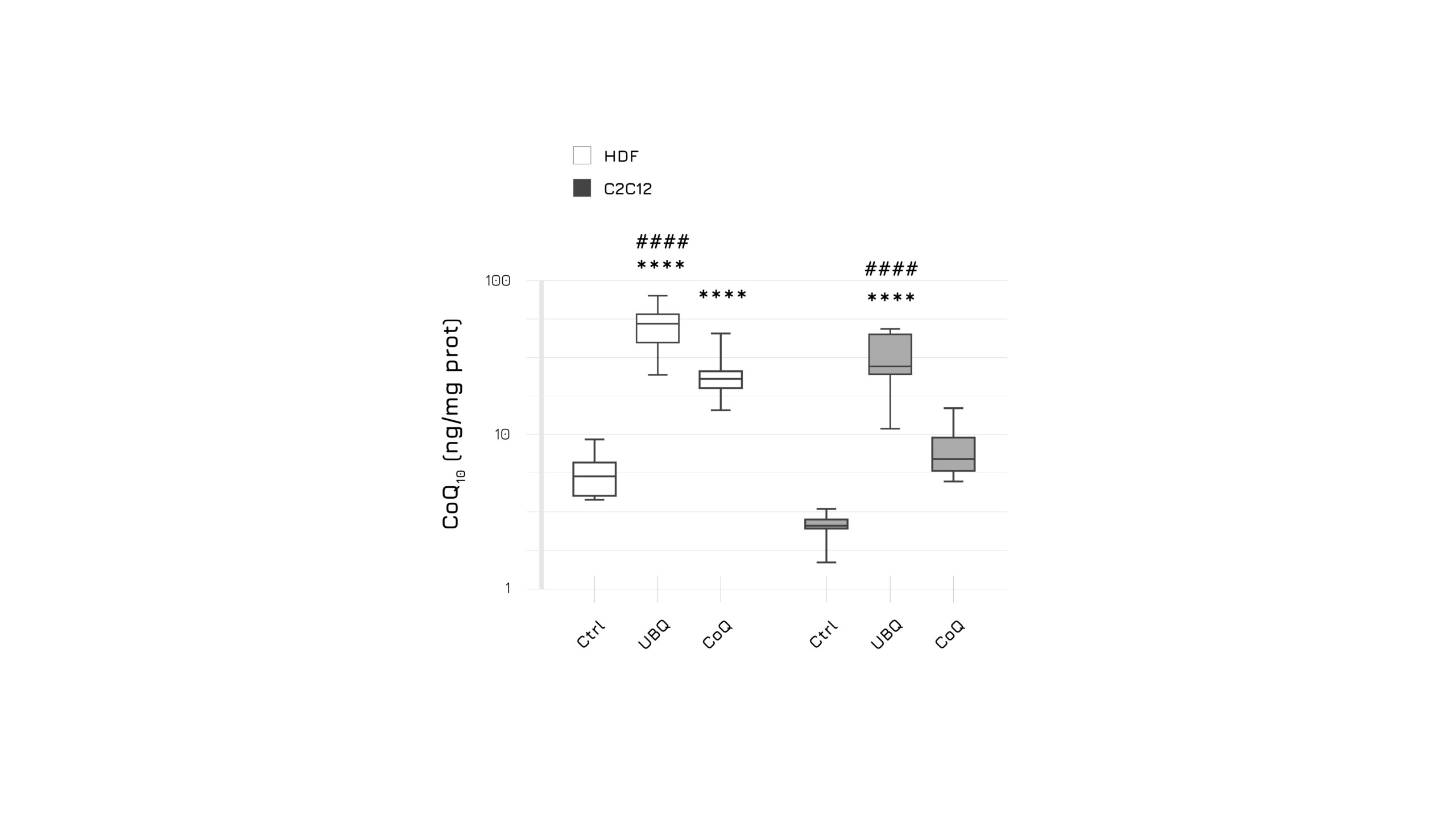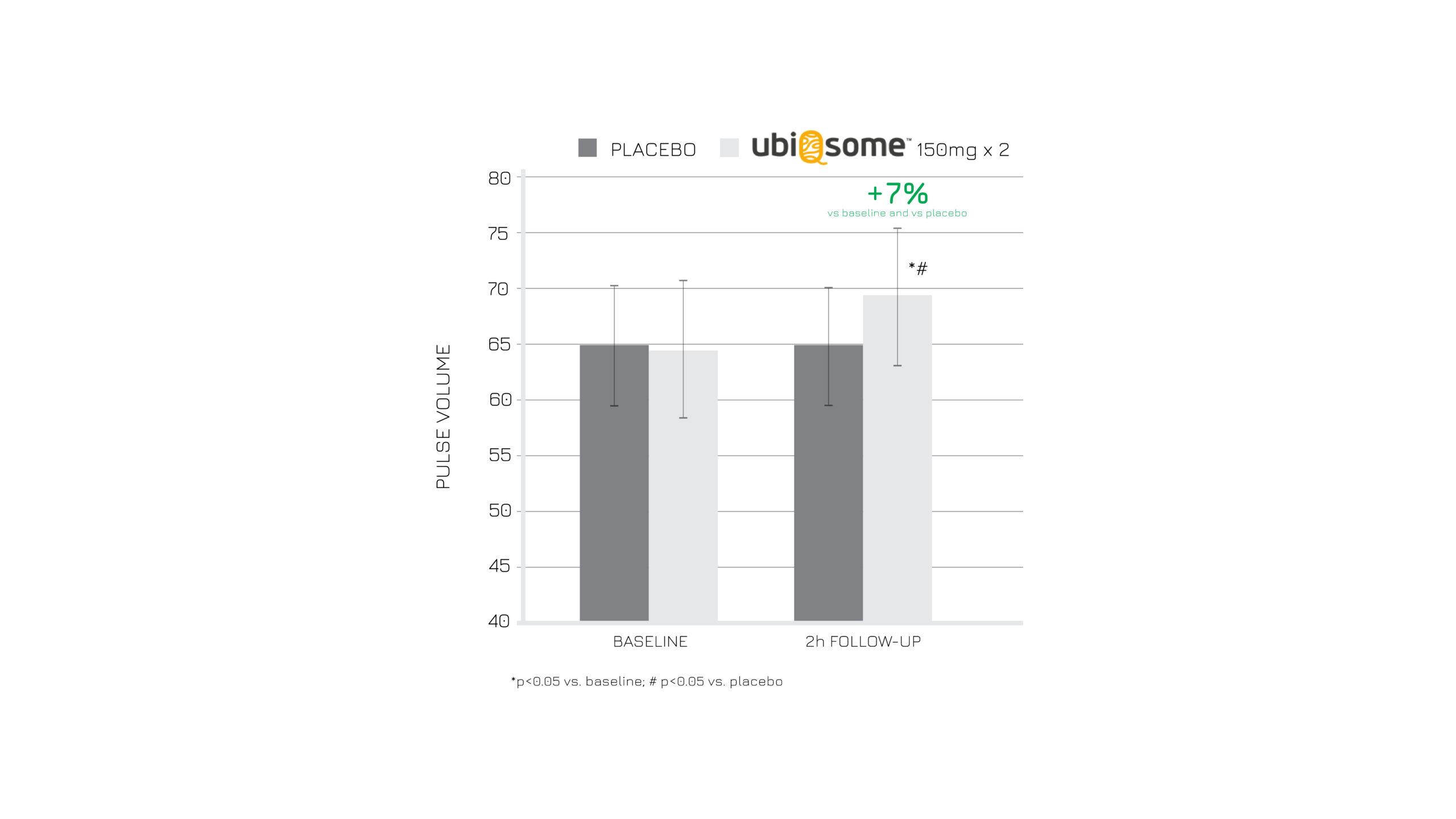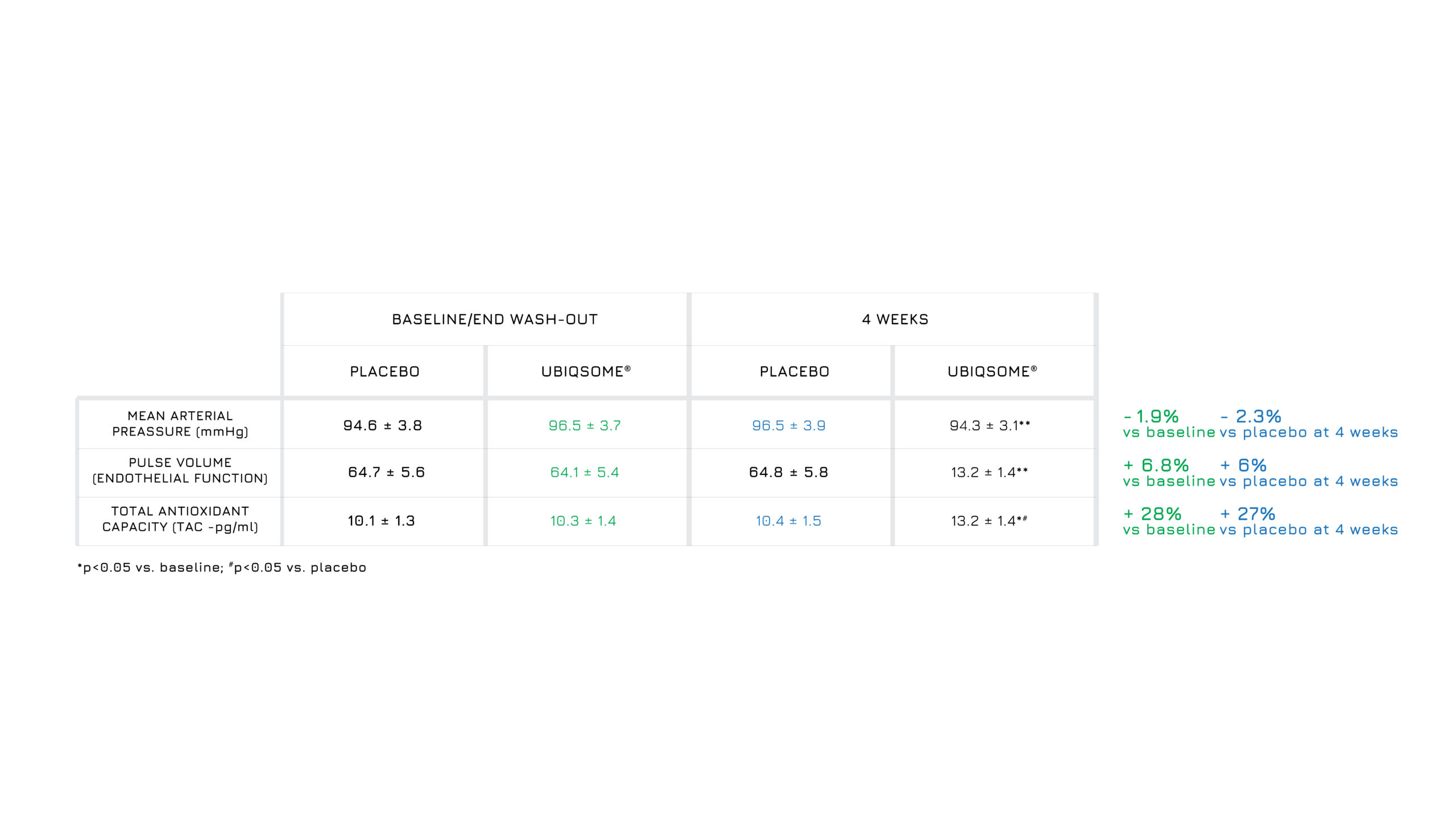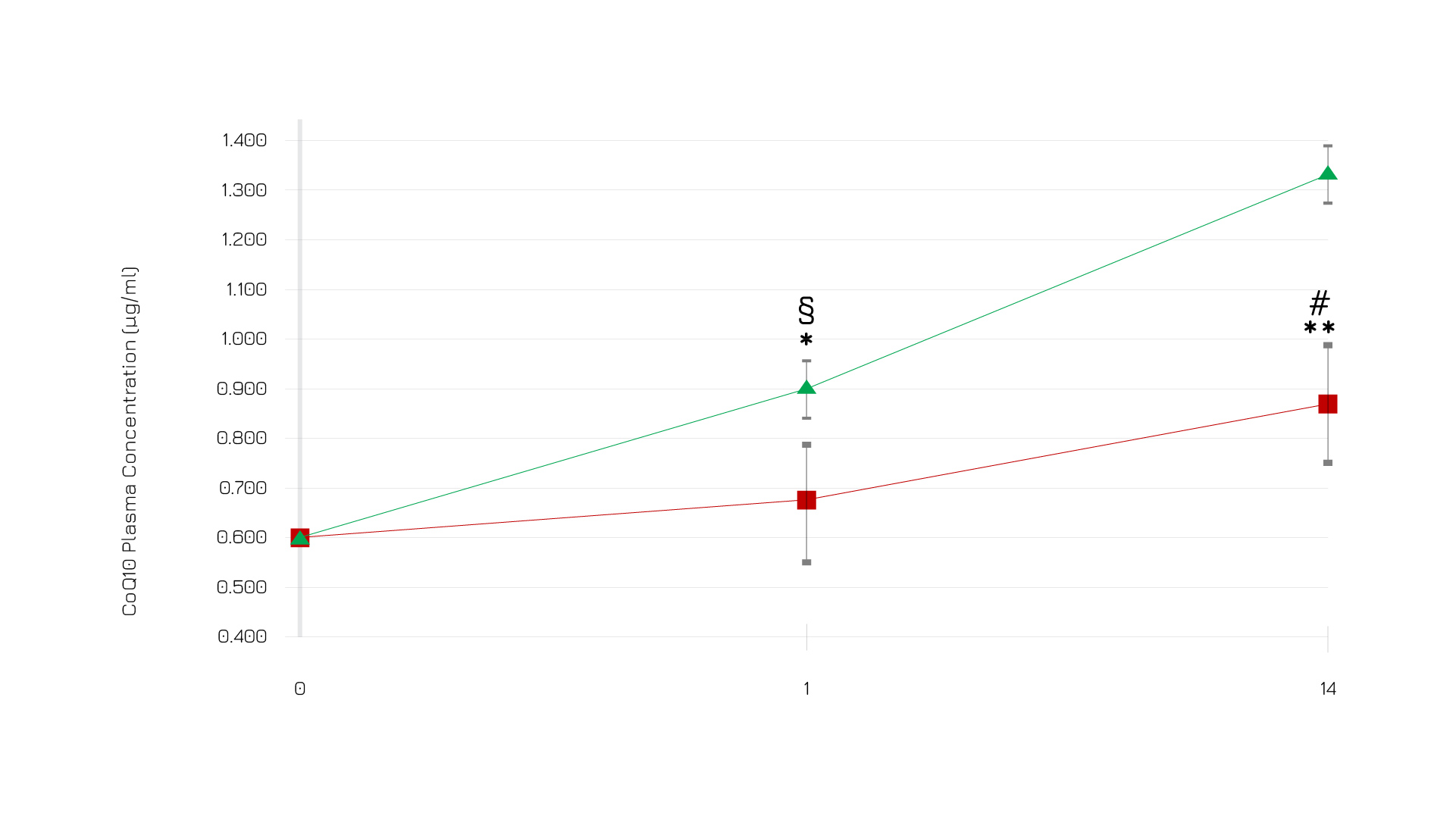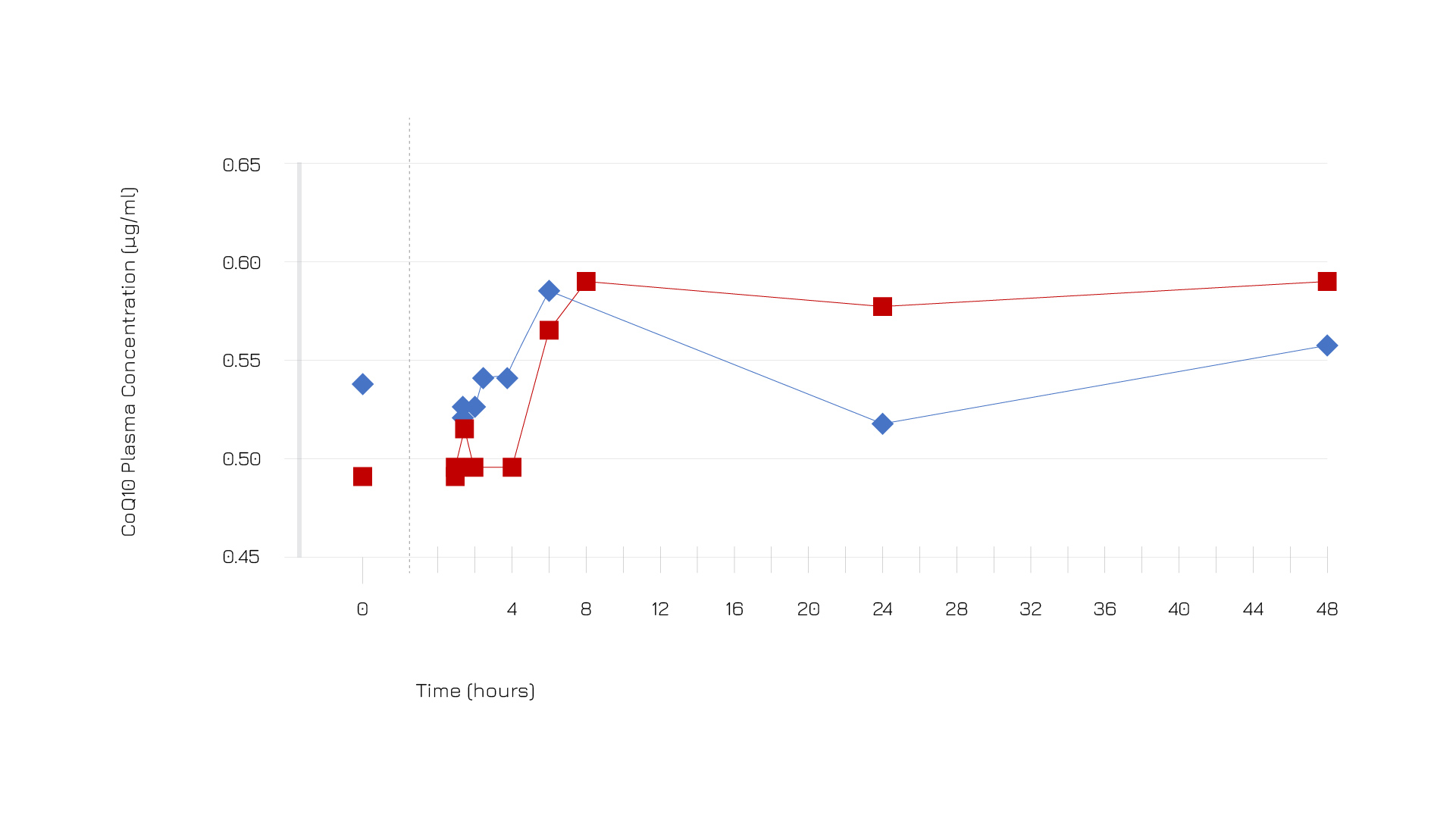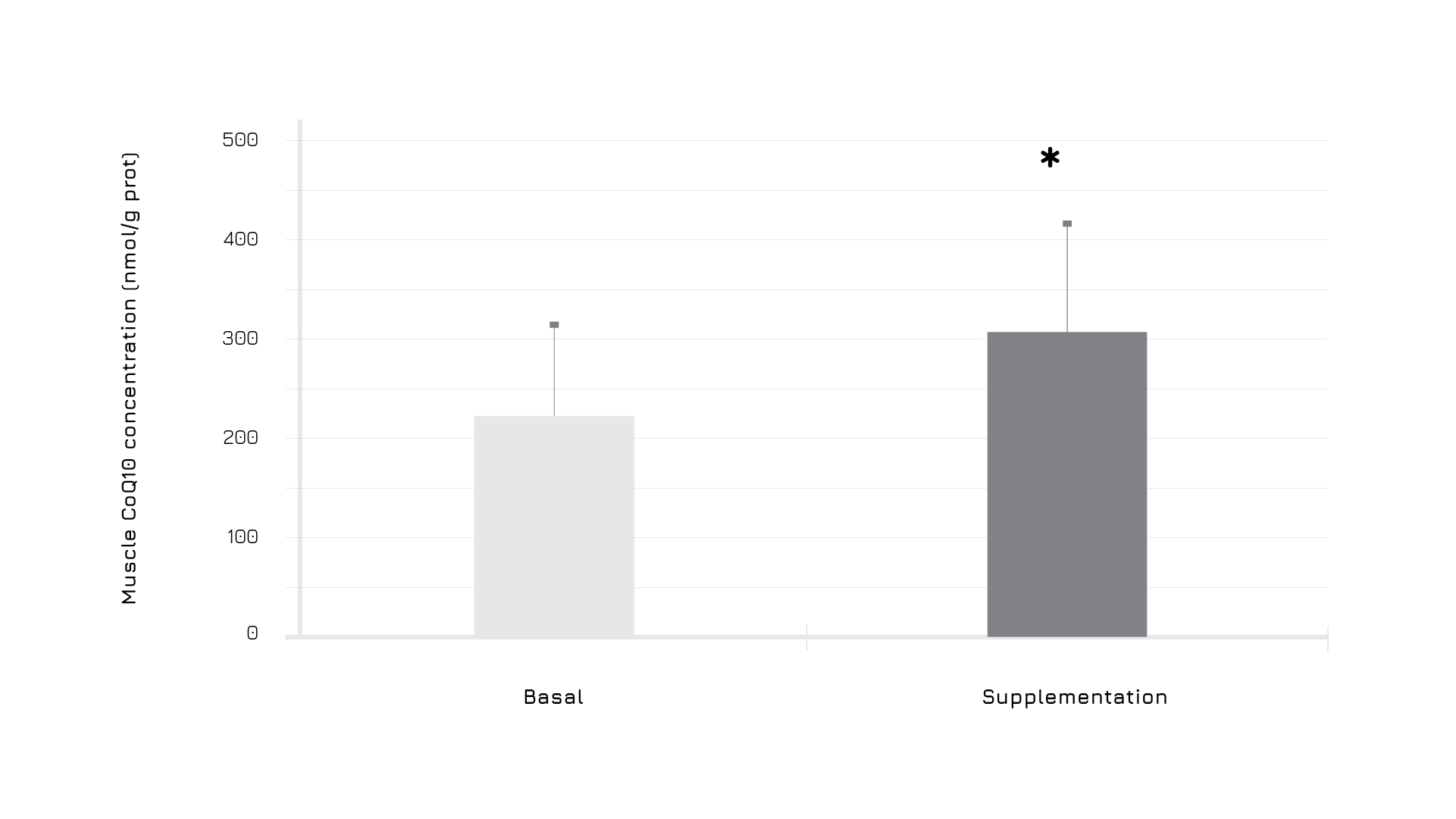Ubiqsome®
Browse all Indena’s documents about products, events, company information and so much more.
Go to sectionPeer-reviewed science on Ubiqsome®
A double blind randomized, placebo-controlled clinical study enrolled 60 elderly cardiovascular subjects affected by statin-associated asthenia, to assess the effects on muscle strength of chronic dietary supplementation with CoQ10 Phytosome™. At each time step for 8 weeks, the treated group and the placebo group were administered 3 physical tests: handgrip test (HG), 1-minute sit-to-stand repetition (STS), 2-minute step test (2MST). After the tests, subjects’ asthenia levels were measured using the Visual Analogue Scale. At the end of the study, people following the Ubiqsome® supplementation regimen (150 mg of Ubiqsome® twice a day) experienced significant improvements in asthenia (-30.0±20.0%), HGs (+29.8±3.6%), 1-min STS repetitions (+36.4±3.9%), and 2MST (11.1±1.8%)(p <0.05 versus baseline and versus placebo) (Figure 1).
Figure 1: HGs, VAS,1-min STS repetitions, and 2MST in treated and placebo groups at baseline and after 8 weeks.
In an ex-vivo study, the Phytosome™ formulation of Ubiqsome® demonstrated significantly higher absorption efficiency in human dermal cells and murine myoblasts. Low-density lipoproteins (LDL) were taken from the plasma of subjects who received either the Phytosome™ formulation (Ubiqsome®) or the crystalline form of CoQ10, and were incubated with both cell lines. The Phytosome™ delivery system demonstrated superior bioabsorption and cellular uptake. This resulted in CoQ10 being delivered to human dermal fibroblasts and murine myoblasts at a rate that was twice and four times more efficient, respectively, than traditional CoQ10 formulations (Figure 2).
Figure 2: Cellular CoQ10 levels in human dermal fibroblasts (HDF) and murine skeletal myoblasts (C2C12) treated with enriched LDL derived from the plasma of volunteers supplemented with Ubiqsome® (UBQ) or crystalline CoQ10 (CoQ).
A double-blind, randomized, placebo-controlled, crossover study on healthy, non-smoker young subjects (n=20, aged 18-40) has shown an optimization of endothelial function (measured as pulse volume) and antioxidant capacity activity (TAC) after Ubiqsome® administration (150 mg twice a day) in both acute (after 2 hours) and chronic (4 weeks) settings (Figures 3,4).
Figure 3: Acute evaluation of pulse volume, 2 hours after administration of Ubiqsome® or placebo.
Figure 4: Long-term evaluation of pulse volume and TAC, 4 weeks after administration of Ubiqsome® or placebo.
A study evaluating the solubility and oral absorption of Ubiqsome® in human volunteers has shown better bioavailability of coenzyme Q10 with Phytosome™ compared to the non-phytosomical formulation of CoQ10.
After 14 days, the administration of 2 capsules allowed for an increase in CoQ10 plasma concentration levels by 1.321 μg/ml (+116%), about 1.5 times greater than the administration of 1 capsule.
Figure 5: CoQ10 plasma levels after CoQ10 and CoQ10 Phytosome™ administrations in a single-dose study in volunteers.
Figure 6: CoQ10 plasma levels after CoQ10 Phytosome™ administration in a repeated-dose study. Blue: CoQ10 Phytosome™ at the dose of 150 mg/day; Red: CoQ10 Phytosome™ at the dose of 300 mg/day.
In a human study conducted on healthy athletes over 50 years old performing a complete training session in a climatic chamber, Ubiqsome® significantly optimized CoQ10 levels in plasma and muscles (Figure 7). Moreover, it improved the total antioxidant capacity (TAC) and favorably controlled biomarkers of oxidative stress and inflammation.
Figure 7: Effect of exercise and CoQ10 Phytosome™ supplementation on CoQ10 concentration in muscle.
An in-vitro evaluation on muscular and intestinal cell lines has confirmed that macropinocytosis is the key mechanism for the internalization of Ubiqsome® at cellular level, since the use of a macropinocytosis inhibitor drastically reduced CoQ10 cellular content.
The same study also confirmed that the Phytosome™ delivery system enhances intracellular concentration of CoQ10, compared to the coenzyme alone (Figure 8).
Figure 8: Coenzyme Q10 determination in different cell lines after product incubation.
BIBLIOGRAPHY
1Cicero at al, Journal of Hypertension 41.1 (2023): e152-e153
2Marcheggiani et al.; Antioxidants (2023); 12, 964.
3Cicero et al.; Biofactors (2022): 1-6.
4Petrangolini et al.; Current Drug Delivery (2019).
5Drobnic et al.; J Food Sci Nutr Res (2020); 3 (4): 262-275.
6Rizzardi et al.; Antioxidants (2021); 10.6: 927.
Sorry, our website doesn't support IE11 and older versions
For a better experience try a modern browser:
This is a private file, to request the download of this resource, please fullfill the fields below.
